Who Saw Her Die? (1972)
Directed by: Aldo Lado
Written by: Aldo Lado, Francesco Barilli, Massimo D'Avak, Ruediger von Spiess
Starring: Adolfo Celi, Anita Strindberg, Dominic Boschero, George Lazenby
AKA CHI L’HA VISTA MORIRE?
ITALY / WEST GERMANY
AVAILABLE ON BLU-RAY AND DIGITAL ON DEMAND: 26TH AUGUST, from SHAMELESS SCREEN ENTERTAINMENT
RUNNING TIME: 94 mins
REVIEWED BY: Dr Lenera
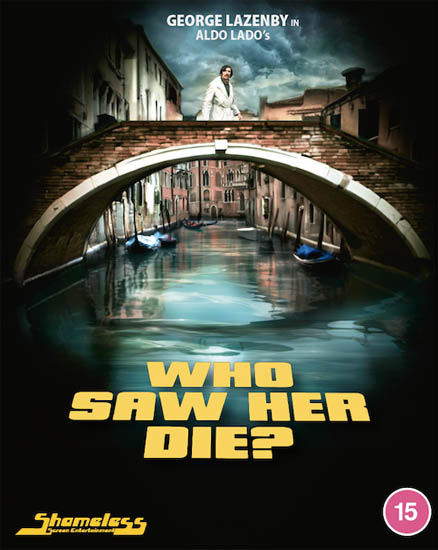
1967, at a ski resort at Mageve, France; a young girl is slain and buried by a maniac wearing a veil. Five years later, Franco Serpieri, a sculptor, welcomes the arrival of his daughter Roberta in Venice. Franco is still married to Roberto’s mother but they are estranged and he spends more time with his mistress Ginevra. Unfortunately the same veil-wearing maniac is also in Venice and begins to stalk Roberto, eventually attacking her. After frantically searching for her, Roberto sees his daughter’s dead body being pulled out of the river. He decides to find the killer and luckily enough has some clues….
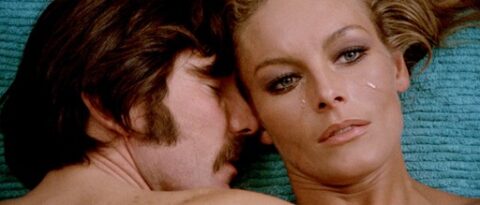
Whenever the opportunity presents itself, I always find myself shouting the praise of Sh9rt Night Of Glass Dolls, a film which I consider to be in the top echelon of Italian horror films. I still remember my first viewing, me deciding to stay up really late and watch it on TV rather than record it and being impressed by so much but especially by how frightening it was. I feel that it’s highly neglected and therefore deserves far more attention than it actually gets. I keep intending to explore more of director Aldo Lado’s [whose directorial debut this was] back catalogue, though the examples I have seen haven’t come anywhere near as good [um – The Humanoid?]. Who Saw Her Die? I saw very soon after the afore-mentioned classic-that-should-be, and was therefore a disappointment, though upon rewatching it after a considerable number of years reveals it to be considerably better than I remembered it. It’s a Giallo which contains many of the ingredients that had become familiar with the genre, a genre which was at its peak when it was made though things soon went downhill with burnout [it’s astonishing how many of these things were made in 1971 and 1972] as much as suddenly declining audience interest; I think they just over-flooded the market. What this film has is a rather austere, even icy, feel, taking place in a wintry Venice which is a far cry from the usual colourful, glamorous, hip Giallo world, and a plot that actually makes sense; well, I haven’t spotting any holes so far. Its resemblance to a 1973 British horror masterpiece will probably already be apparent to the reader, but Giallo fans and fans of one of the top Italian horror and thriller directors will also notice distinct similarities to another Giallo made later the same year which some, including myself, consider to be one of the very best. And there’s a rather impressive performance from one-time 007 George Lazenby who really did get better.
It opens with slow pans across the snowy landscape where the ski resort is, then revealing the majestic mountains. As the credits stop halfway, we cut to a mother and daughter having fun there, though their dialogue is in French with no English dubbing or subtitles, which is surprising but not important seeing as we don’t really need to hear what they’re saying. The girl slides into a part of the forest nearby on a sleigh and falls off, to be surprised and attacked by someone wearing a veil so that, when we adopt his or her point of view, it seems like there’s one of those scrims over the camera which can occasionally show up in movies to give a gauzy look. The actual killing is soft-peddled, but we do dwell on the killer burying her in the snow. The killer approaching her is accompanied by unnerving chorale music from Ennio Morricone – however the same piece is then used every time he or she is near a victim, which is very often, and you may eventually get fed-up with hearing it. The rest of the credits play over police shots of the girl’s body and even the case log, and then we’re in Venice, and our hero meeting his daughter at the airport. A bit of time is spent with the two of them, hanging out together or with two of his friends while other characters who may become important are introduced. One of them talks of his plans for Venice, and Franco replies that he imagines the city sunk into the river with only the tops of the buildings visible and “a white sailboat going along on the breeze with me on it”. The introduction of Elizabeth Serpiere is neat, done via slides which daughter Roberta is watching. Of course Franco is more interested in Ginerva, even though he’s peed off that his boss Serafian won’t let him accept an invite to take a sculpture to Paris.
The build-up to the murder of Roberta is lengthy but very well pulled off by Lado, showing how good at prolonged suspense he could be, unless you really do get irritated by the veil in front of the camera; I think it’s a nice touch. Eventually after several times when you think the killer’s going to strike, and after Roberta playing games with the local kids where she’s almost but not quite being bullied, something which is shot with a De Palma-type skill, and something which is also intercut with Franco and Ginerva having sex, he or she do, intercutting with carcasses in a butcher’s shop taking the place of us actually seeing the killing. Some time is also spent on the guilty [because he left her] Roberta searching for her; Lado does like to take his time, but here we’re emotionally engaged because we’ve been able to dwell on the two of them together. The prolonging of the inevitable eventually ends when the body washes up in the river. Franco and Elisabeth reunite, but, perhaps of the similar opinion of one of his friends who tells the local inspector De Donati “you couldn’t catch pneumonia”, Franco wants to catch the killer. He learns that the girl murdered in France five years ago had red hair just like Roberta, and that a black-clad person in a veil was seen at the scene of both killings. His investigation takes in a bit of that typical Giallo sleaze, with one character rumoured to be a paedophile and another in porn movies, while we sometimes cut to another love triangle which initially seems to have nothing to do with the main plot though eventually does – a bit. And of course the killer reveals him or herself to be not just interested in killing children, the [or course] black gloved menace starting to polish characters off in scenes in which the build-up is sometimes better than the actual killings. A garroting in a cinema is impressive for its cheek, but the aftermath shows lots of people in the place standing up to see a corpse most of them wouldn’t have seen because it’s a flat room.

Even on that first viewing I was able to work out the killer almost halfway through -and that was before I’d seen the rather better known Giallo from a few months later which not just had its killer be of the same profession but have the same motif. What’s funny is that the Italian censors insisted on a line right at the end of the film where a character offscreen tells us that, actually, the killer was of a different profession! This of course weakens what Lado, who liked to incorporate political points, was attacking here, though elsewhere he’s still able to work in some criticising of the rich for exploiting the poor. Interestingly, the afore-mentioned second film came out only four months later but such silliness wasn’t insisted upon then. Lado, who cowrote the screenplay with three others – Francesco Barilli, Massimo D’Avak and co-prodicer Ruediger von Spiess – allows himself two false scares, the latter his own Psycho-referencing shower moment where a woman is surprised by a maid who’s unfortunately wearing black gloves. However, the tone is generally very serious and even muted, and surprisingly moving when the grief-stricken Franco and Elizabeth get together. After the camera pans back and forth between Elizabeth [lying on her back and awake] and Franco [lying on his side and awake], we get some quick shots of their bodies connected, and one can’t help but think of Donald Sutherland and Julie Christie in Don’t Look Now: even elsewhere the editing of quick shots from one part of the film to another is all rather Nicolas Roeg. Most of the similarities, such as the presentation of Venice as a gloomy winter maze, can be put down to coincidence, but after watching this bit one really can’t help but wonder if Roeg saw this film, even if that seems unlikely because it wasn’t released in UK cinemas.
Nonetheless, Franco Di Giacomo’s photography is terrific; he seems determined to make the place look as different from what we normally see in films as possible. His bleak, rainy shots of the river are astonishing in their depressed feel. A chase in a disused factory is well staged though the final confrontation is a very brief and one-sided fight. I suppose it would have looked stupid for Lazenby to look like he’s in danger from his opponent, even though he lost lots of weight for the part. In fact he looks awful here, scraggy and worn out, like he’s been on heroine or something, but fair play to him. It’s often hard to entirely appreciate performances in English when the voices that we’re actually listening to are the voice of others; as with many films like this, everyone spoke in their own language, then were dubbed into various tongues without recalling any of the cast. Lazenby is dubbed with an American accent, but you can see him really having a good go at playing his role with conviction, sometimes genuinely conveying his character’s torment. Even if you’re one of those people who, like me, considers him to have been quite a good James Bond, there’s no doubt that in the three years since On Her Majesty’s Secret Service, which he went into without having had any acting experience, and this film, he’d considerably improved as a performer. 007 fans will also enjoy seeing Adolpho Celi, though again dubbed, from Thunderball, while the young Nicoletta Elmi makes her usual slightly uncanny yet also natural impression. Was Jose Quaglio in every Lado film?
Morricone’s musical score employs chorale work in every cue. Aside from that oft-repeated killer motif, there’s some religioso stuff for largely outdoor Venice scenes, and that’s about it in what’s one of the Maestro’s lesser efforts, which is sometimes badly cut in and out of the film too. Of course, considering the huge amount of film scores he was churning out around this time, one can forgive him for going below par sometimes. Who Saw Her Die? is probably not the film to begin with if you’re relatively new to the often dubious but also often irresistible pleasures of the Giallo; it’s rather chilly and low-key, despite something always happening in its second half. But it’s rather interesting if you’re into this stuff, with perhaps slightly frustrated artist Lado trying to put a somewhat original spin on an already well-worn form.
BLU-RAY SPECIAL FEATURES
New encode in Full HD 1080P from 2K-Restored full-length original negative
Who Saw Her Die? looks exceptionally good here, with the often muted colour palette being made the most of, the blacks very deep, and a pretty sharp image which almost belies the film’s age. It seems that this version – and the previous DVD from Shameless – include a couple of stabs which weren’t in original prints by incorporating footage from the trailer. Revisionism or following the director’s intentions? I don’t know enough about this film to provide an answer to that question.
New English subtitles & additional English SDH
Interview with Director Aldo Lado – ‘Ring a Ring o’Rosie’ [35 mins]
This is one of those titles which Arrow were only able to release in North America, and Shameless have had to produce their own extras. Nonetheless, they’ve come up trumps, even if we miss an audio commentary. Here, in a piece ported from Germany’s Koch Media DVD, Lado talks for a decent length about the film in this interview. He discusses how he came to be involved – he was assisting Bernardo Bertolucci before he became a director – and did this project because his Short Night Of Glass Dolls producer Enzo Doria was involved., and also because he grew up in Venice which helped fuel it – Lado wanted to recreate the feeling he had as a child when asked to get bread and he had to cross a bridge in the fog. He also relates another childhod experience which led him to create the killer, and says that he cast Alessandro Haber b ecause he looked like Montgomery Clift, though I couldn’t see much resemblence myself. Nonetheless Lado really gives good value here, covering most things, even if he doesn’t like rewatching his own films!
Interview with Producer Enzo Doria – ‘The Quest for Money’ [18 mins]
Doria gives an impression of how fragile the money situation often was in these films, films which were sometimes made with just “promissory notes” and no real contract. With Short Night Of Glass Dolls, the cheques bounced just after production and Doria then spent several years making films just to recoup his losses. The candid Doria calls Lazenby “useless” and tells of how the water went down while shooting a canal scene in Who Saw Her Die? and didn’t know who to take out his anger out on.
Interview with writer Francesco Barilli – ‘To Live and Die in Venice’ [11 mins]
Barilli, who sometimes brings up The Perfume Of The Lady In Black which he also wrote and which is very good and interesting indeed, says that he was supposed to direct Who Saw Her Die?, which he did end up liking even though certain things he scripted weren’t done because of money. He says that he’s not that keen on Argento and Fulci, which is fair enough – it’s an opinion – then strangely says that he’d make blood black because he thinks it’s more effective. while Dominique Boschero is “stunning, but I don’t know why”.
Aldo Lado Q&A courtesy of the ‘Abertoir International Horror Film Festival’ [43 mins]
This older special feature, probably a home viewing debut, is a different sort of Q and A in that it was done entirely online, though this was during the pandemic so that’s hardly surprising. The interviewer Russ Hunter asks the chain-smoking Lado the questions and luckily is able to speak Italian, though of course this means that the viewer has to sit through a lot of un-subtitled Italian from both men. Still, when Hunter translates Lado and then a few “audience” members who also ask questions, Lado’s words are always interesting. He says how the commercial nature of his films allowed him to sneak in political elements, how his collaboration with Morricone was great, Morricone being able to experiment while his music influencing the films, and virtually rubbishes the idea that Roeg was influenced by Who Saw Her Die?.
Maybe not quite a classic Giallo, but certainly an interesting one, “Who Saw Her Die?” receives a rather good release from Shameless. Recommended!




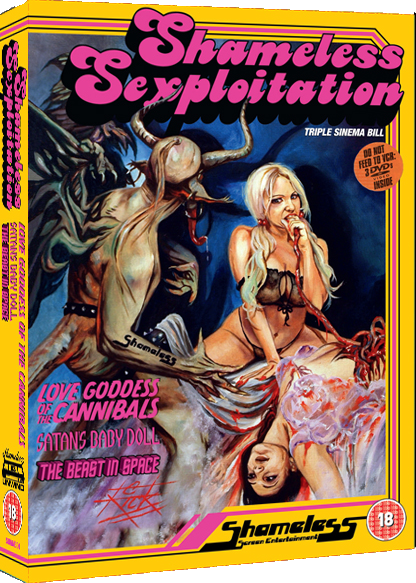
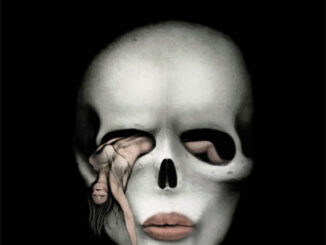
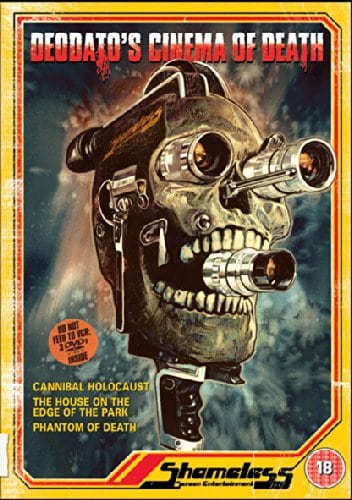
Be the first to comment